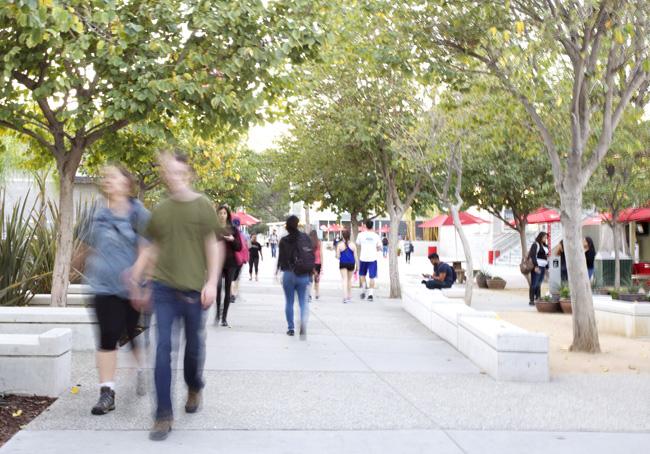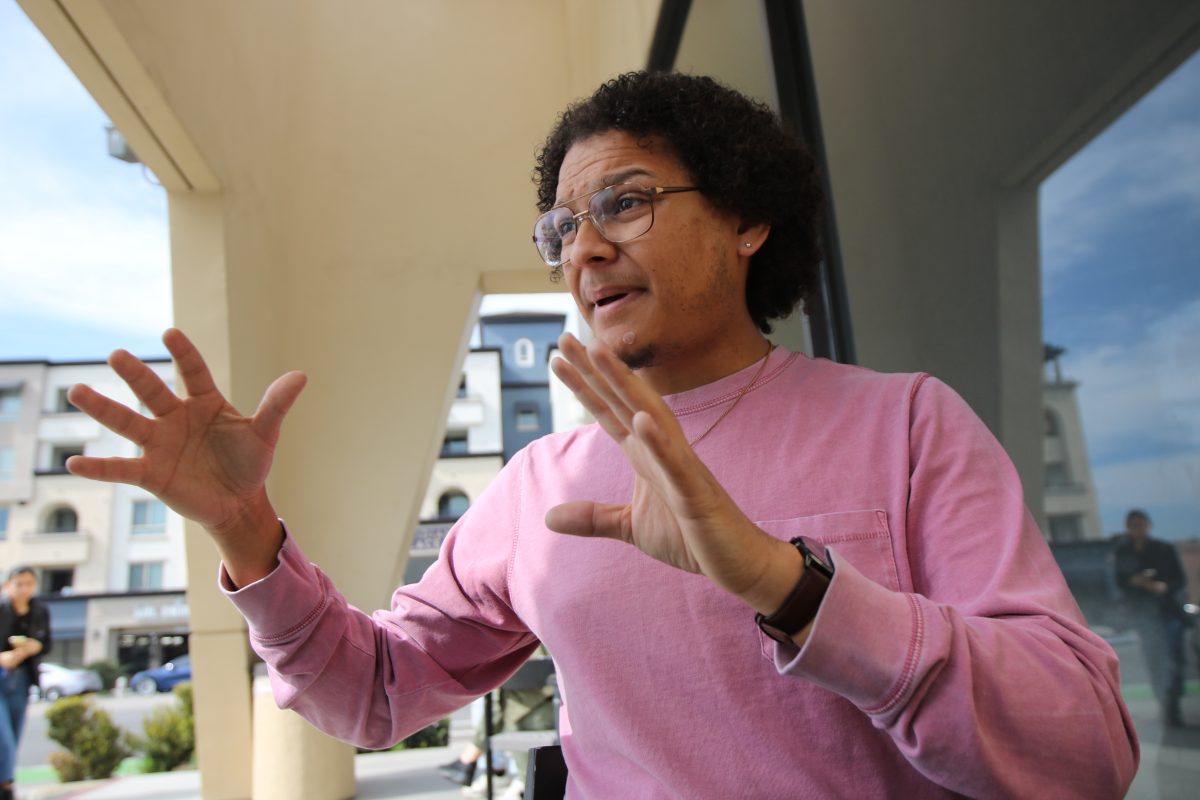Though CSUN admitted a record-breaking number of freshmen students in the fall semester, this spring the numbers for incoming freshmen and transfer students are slim.
For the past several years the majority of universities within the CSU system have been unable to admit transfer students in the spring due to state budget cuts, CSUN being one of them. As a result, CSUN is forced to admit an influx of freshmen and transfer students in the fall.
Harold Hellenbrand, provost and vice president of academic affairs, estimates the university only accepted a few hundred students this spring semester.
“Obviously those people (who want to transfer in the spring) do not go away, they’ll just come here in another term,” Hellenbrand said.
Because of that, the provost said the university has increased the number of applicants it accepts in the fall semester by approximately 1,000 students.
“Once people learn how the system operates, we have many more people applying for the fall (rather than the spring),” Hellenbrand said. “There were no general admissions for transfer students in the spring. If you completed the transfer curriculum at the community college then you were admitted, but there were few people who have done that.”
Though CSUN did not admit general transfer students this spring semester, the university is still bursting with a record number of 38,310 students, with more than 7,000 of them being freshmen, according to the Office of Institutional Research.
In anticipation of the large number of students on campus, the CSUN Police Department (PD) has procedures in place to keep the high volume of traffic flowing during the first few weeks of the semester.
PD will staff every corner at intersections near parking lots and structures with parking enforcement personnel to direct traffic on both the east and west sides of campus. As the lots fill up, the staff will direct people to the overflow parking lots such as F10 on Lassen and Lindley Avenue.
Capt. Alfredo Fernandez, parking and transportation services officer, said CSUN PD has developed alternative transportation programs for students.
“We have a lot of options (and) we try to keep as many students off the main streets as possible,” Fernandez said. “We want to look at other opportunities instead of having students drive as much as we can.”
PD will continue to offer a prorated parking permit to students who will park in F10 parking lot and take the shuttle to campus. The shuttle runs every 15 minutes and will drop students off in front of the campus.
In addition to the F10 prorated-permit option, CSUN PD has partnered with Associated Students to provide Zipcar services, a car rental option for students. As reported by the Daily Sundial, Zipcar allows students to rent a car from anywhere between a few hours to an entire day. Two vehicles have already been provided in student housing with the intention of providing more car rental options in the near future.
“We understand that we will always have students parking (because) we’re a commuter campus, but in the end, the more we can do to offset (traffic congestion) the better we are,” Fernandez said.
The Student Recreation Center (SRC) staff are also anticipating high numbers over the next few weeks. A high volume of students will be registering to use the facility this semester.
“What we do since we know they are going to be large crowds is we staff our front desk with more people during the busiest times,” said SRC director Jimmy Francis. “Busiest times are between 11 a.m. to 2 p.m. and 4 p.m. to 7 p.m.”
Francis said he anticipates anywhere between 4,000-5,000 students to visit the SRC every day for the next two weeks. However as the weeks continue to pass, an average of 3,000-4,000 students will visit the facility daily.
“What students tend to do as the semester goes (is) find the best time (to come to the facility),”Francis said. “Students get a feel for the best times to visit and gravitate toward those times.”
Francis said for the first few weeks he will have extra staff available to assist students during the busiest times, adding that students typically do “a very nice job of being patient and knowing that they might have to wait in line” during the first few weeks.
Though open transfers were not accepted this spring semester, Hellenbrand anticipates more transfer students will be accepted in future spring semesters once students are made aware of the Student Transfer Achievement Reform (STAR) act.
STAR, initiated in Sept. 2010, is a combined effort between the California Community College (CCC) and the California State University (CSU) systems. The transfer program will enable students attending a community college to receive an associate of arts or associate of science degree by meeting specified general education and major requirements.
STAR will also require students to take courses amounting to 60 units while at a community college. Once complete, all students with transfer associates degrees will be guaranteed admittance into a CSU as a junior. These same students may also be admitted into a CSU during the spring semesters.
Steven Stepanek, newly-appointed CSU board of trustees member and chair of the computer science department, said the program will prevent students from spending unnecessary time in community colleges and will prove to be financially beneficial for transfer students.
“One of the biggest problems of the past for community college students is that they would take anywhere from 60 to 100 units at a community college,” said Stepanek. “And then when they arrive at a CSU or a UC campus only 25 or 30 of those units are going to count. So they’re arriving as a senior and still taking freshmen classes.”
Stepanek said the program allows students to select a transfer degree based on their intended major. The STAR program offers a total of 25 degree options in different majors.
“(Whether students will) be able to get into their first choice CSU campus, there is no guarantee there,” Stepanek said. “The students may need to have a certain level of flexibility. Part of the first (priority) is where are the students going to community college and what transfer degrees are they offering.”
As required by the bill, each CCC has adopted at least two of the 25 transfer degrees as options for their students. It is up to the students discretion which CCC they will attend according to the transfer degrees that community college offers.
“There will be a set of courses representing a total of 60 units, no more, that students will take at the community college with the guarantee that they will be able to transfer to a CSU campus. (Students will only) need another 60 units once they arrive to the CSU campus in order to complete their 4-year degree,” Stepanek said.
Michelle Salazar, a 35-year-old CSUN alumni who graduated in 2005, attended Valley Community College in 2001 before transferring to CSUN.
“The administration and community college counseling was not on point for sure,” Salazar said. “Not all of my credits transferred over and…it sucks for the students and for the people that want to get an education.”
Salazar said she wanted to take care of her general education courses in community college because it is less expensive, but soon found the process to be a waste of money, time and energy.
“It’s draining and it’s almost like you get discouraged with the whole process,” Salazar said, adding that she would have benefited from the STAR program while she was in community college. “I definitely believe that it would have been a more efficient (experience).”






